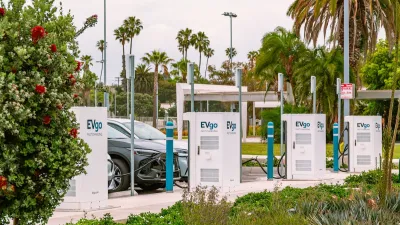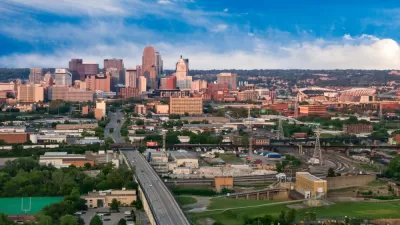Rebate programs are at the heart of collaborative success.

In 2013 the governors of ten states collectively agreed to boost policies and public information that would put 3.3 million electric vehicles on the road by 2025. And according to a new report, they have followed through on their promise.
Oregon Capital Chronicle writes on how Oregon, along with California, Connecticut, Maine, Maryland, Massachusetts, New Jersey, New York, Rhode Islan,d and Vermont signed a memorandum to spur sales of zero-emission vehicles in their respective states. In Oregon, for example, just 300 electric vehicles were registered in 2013. Today there are more than 100,000 — about 5 percent of all new vehicles registered in the past decade.
That growth didn’t come without a cost. “Cumulative electric vehicle sales across the 10 states grew steadily in the first few years after the 2013 memorandum, but sales fully doubled from 2022 to 2024. In 2022, Congress passed the Inflation Reduction Act that included a $7,500 tax rebate on the purchase of a new electric vehicle. Oregon’s own rebate program, passed in 2017, and offers up to $7,500 back on the purchase of an electric vehicle,” The Capital Chronicle reports. “One-third of all electric and plug-in hybrid vehicles registered in Oregon received one of the state’s Clean Vehicle Rebates, according to officials at the Oregon Department of Environmental Quality, which distributes the rebates. The rebates have been worth nearly $100 million since 2017.”
The ten states that signed the 2013 memorandum combined with five more states that created similar programs now account for more than one third of all new EVs sales in the United States.
FULL STORY: Oregon, nine other states hit 2013 goal of getting 3.3 million electric vehicles on roads by 2025

Maui's Vacation Rental Debate Turns Ugly
Verbal attacks, misinformation campaigns and fistfights plague a high-stakes debate to convert thousands of vacation rentals into long-term housing.

Planetizen Federal Action Tracker
A weekly monitor of how Trump’s orders and actions are impacting planners and planning in America.

San Francisco Suspends Traffic Calming Amidst Record Deaths
Citing “a challenging fiscal landscape,” the city will cease the program on the heels of 42 traffic deaths, including 24 pedestrians.

Defunct Pittsburgh Power Plant to Become Residential Tower
A decommissioned steam heat plant will be redeveloped into almost 100 affordable housing units.

Trump Prompts Restructuring of Transportation Research Board in “Unprecedented Overreach”
The TRB has eliminated more than half of its committees including those focused on climate, equity, and cities.

Amtrak Rolls Out New Orleans to Alabama “Mardi Gras” Train
The new service will operate morning and evening departures between Mobile and New Orleans.
Urban Design for Planners 1: Software Tools
This six-course series explores essential urban design concepts using open source software and equips planners with the tools they need to participate fully in the urban design process.
Planning for Universal Design
Learn the tools for implementing Universal Design in planning regulations.
Heyer Gruel & Associates PA
JM Goldson LLC
Custer County Colorado
City of Camden Redevelopment Agency
City of Astoria
Transportation Research & Education Center (TREC) at Portland State University
Jefferson Parish Government
Camden Redevelopment Agency
City of Claremont





























